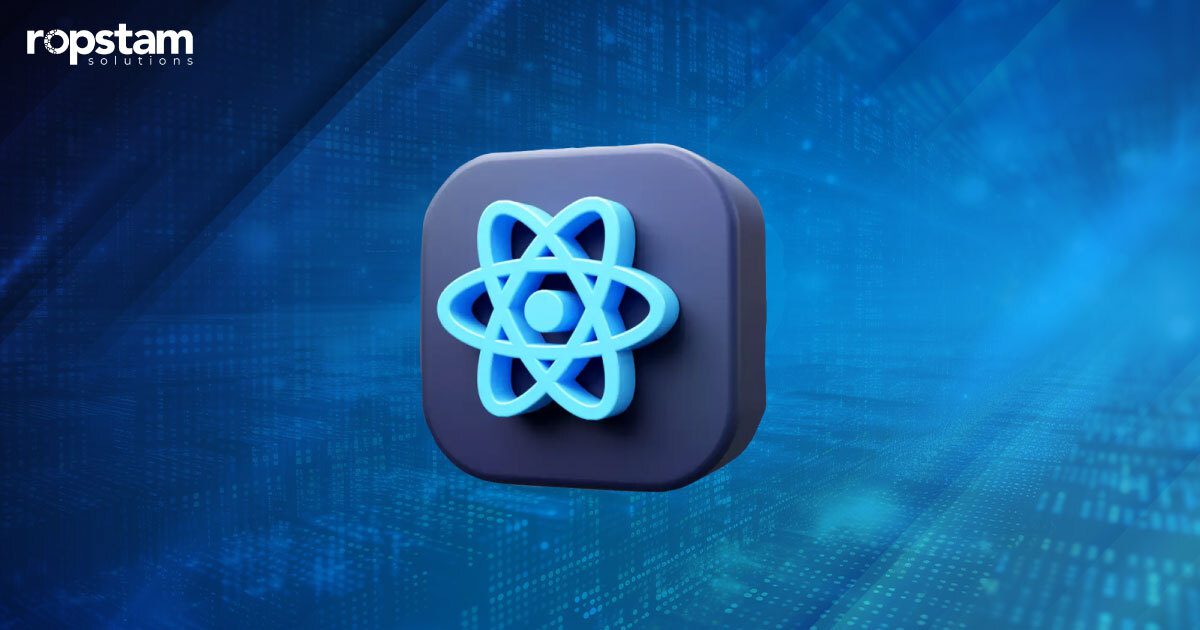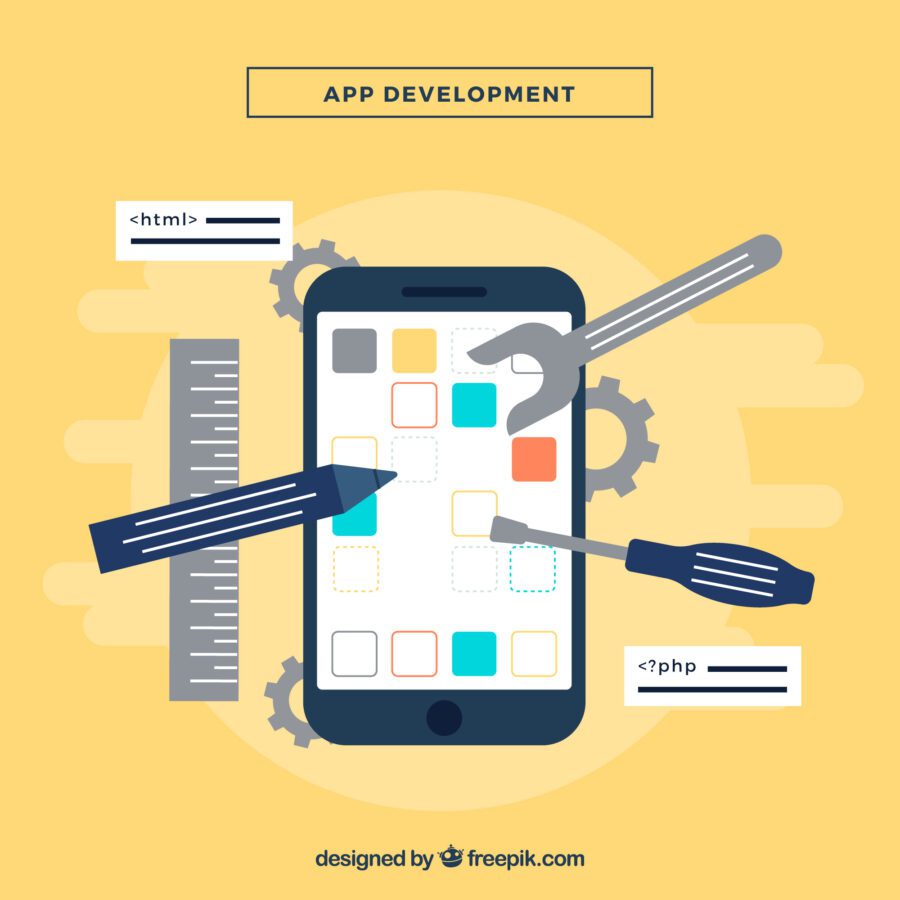In today’s day and age, React Native is one of the most popular frameworks for mobile app development. Preferred by countless developers, React Native also offers UI libraries that are essential to accelerating the development process.
With such pre-eminent libraries, developers can streamline flow of your new React Native project and reduce the application’s time-to-market. If you are searching for best React Native UI libraries, keep on reading.
What are React Native UI libraries?
Before exploring the types of React Native UI libraries, we must first understand their significance. React Native UI libraries are collections of pre-built, reusable components that developers can integrate into their mobile applications to create a visually appealing and functional user interface.
Best React Native UI libraries and components
Stating that React Native is an extremely useful framework with a host of advantages for mobile app developers would not be an overstatement. To leverage the power of this app development framework, here, we have compiled a list of some of the most famous and beneficial React Native UI libraries:
- React Native Paper
- Nachos UI
- Teaset
- React Native Elements
- Nativebase
- React Native Material Kit
- Shoutem UI
- Victory Native
- Ant Design
- React Native UI Kitten
- Galio
- Ignite
1. React Native Paper
React Native Paper is a material design-inspired library offering a wide range of components that adhere to Google’s Material Design guidelines. It is perfect for developers who want a consistent look and feel that users are familiar with, especially on Android devices.
As a React Native developer, you can leverage the power of this library to create apps with a material theme, implement dark mode, and access cross-platform components.
Advantages
- Material Design compliant
- Supports dark theme
- Highly customizable components
- Cross-platform consistency
- Extensive documentation and community support
2. Nachos UI
Nachos UI is a React Native library that provides over 30 customizable UI components. It’s specifically designed for developers who need a quick and easy way to make their apps stand out with playful elements.
Advantages
- Over 30 pre-styled components
- Easy to customize and theme
- Built-in animations
- Interactive components like swipeable cards
- Utilizes Avocado for styling
3. Teaset
It is a powerful UI library offering a simple and refined suite of components. It’s considered suitable for developers looking for minimalist design and ease of use. Use this UI library for building crisp, clean interfaces, particularly if you are targeting businesses and productivity applications.
Advantages
- Minimalist and elegant design
- Easy to integrate without heavy dependencies
- Includes unique components like Label and TransformView
- Good for business and productivity apps
- Offers theme support for consistent styling
4. React Native Elements
React Native Elements provides a complete set of components that are easy to use and customize. It is considered ideal for developers, necessitating a highly adaptable UI toolkit. If you are looking for a library to streamline the development of apps demanding a versatile design system, look no further than React Native Elements.
Advantages
- Customizable components for a unique UI
- Cross-platform compatibility
- Variety of built-in customizable buttons and icons
- Overlay, pricing, and platform-specific components
- Active community and regular updates
5. NativeBase
A widely used library, Native Base allows developers to build universal apps with ease. It is perfect for those who want scalability and compatibility with other libraries. Among the several use cases of this library, some are e-commerce apps and applications that require simplistic integration with third-party plugins.
Advantages
- Scalable and robust
- A wide variety of components
- Theming capabilities for branding
- Integration-ready with third-party libraries like Redux
6. React Native Material Kit
React Native Material Kit brings material design to React Native, with a focus on animations and transitions. It is ideal for apps that need a fluid and interactive user experience. Moreover, for applications that emphasize visual feedback and material ripple effects, React Native Material Kit is the preferred choice for developers.
Advantages
- Material design with fluid animations
- Ripple and transition effects
- Easy to use and integrate
- Theming support for custom styles
- Low overhead, focusing on performance
7. Shoutem UI
Shoutem UI is known for its beautiful design and modular components. It’s great for developers who want to build stylish apps with less effort. Choose this library if you are looking to develop lifestyle and social networking apps that require a polished look and feel.
Advantages
- Stylish and modular design
- Themed components for consistency
- Animation support for dynamic interfaces
- Extendable components for customization
- Integration with Shoutem Builder for visual editing
8. Victory Native
Victory Native is one of the best chart libraries specializes in data visualization components for React Native. It’s ideal for developers looking to create charts and graphs. This library’s use cases include analytics apps and dashboards that require interactive data representations.
Advantages
- Specialized in data visualization
- Interactive charts and graphs
- Extensible chart components
- Compatible with SVG elements
- Facile Integration with React Native
9. Ant Design
Ant Design, known as Ant Design Mobile for React Native, is a library that mirrors Ant Design for web applications. It’s suitable for developers aiming for consistency between web and mobile apps. Use this library to craft enterprise-level apps and platforms where uniformity across devices is crucial.
Advantages
- Consistency with Ant Design for web
- Enterprise-level components
- Comprehensive component library
- High-quality and interactive elements
- Wide adoption and strong community support
10. React Native UI Kitten
React Native UI Kitten is a framework that allows developers to create a themed user interface based on “Eva Design System”. This renowned library is considered ideal for those who want a highly customizable and feature-rich UI.
Advantages
- High level of customization
- Focus on visual consistency
- Wide variety of UI components
- Built-in light and dark themes
11. Galio
A lightweight and minimalist UI library for React Native, Galio has been specifically designed for developers who need a simple and clean UI toolkit for quick prototyping. It is particularly useful for startups and small projects that need to get off the ground quickly.
Advantages
- Minimalist and clean design
- Lightweight and easy to use
- Ideal for rapid prototyping
- Large community support
- Cross-platform components
12. Ignite
Ignite is not just a UI library but a complete boilerplate for React Native apps, offering UI components, plugin integration, and best practices. It’s best for those who want a jumpstart on app development with a comprehensive toolkit.
Advantages
- Comprehensive boilerplate with UI components
- Integrated plugins and tools
- Incorporates best practices for development
- Command-line interface for generating components
- Strong focus on scalability and maintainability
Benefits of using React Native UI libraries
React Native UI libraries offer a a lot of advantages for developers. One of the primary benefits of using these renowned libraries is rapid speed. They enable rapid prototyping and development, allowing teams to bring products to market faster. Developers can immediately see the impact of their work without investing hours in designing and coding each UI element.
Consistency is another significant advantage offered by such libraries. A consistent UI promotes a more innovative user experience, making it easier for users to navigate and interact with the app.
Last but not least, efficiency gains are substantial. Given that UI libraries follow best practices and are often optimized for performance, they ensure that the developed app not only looks good but also operates smoothly on multiple platforms.
In short, React Native UI libraries are the catalysts for accelerated app development. They empower developers to create high-quality apps that resonate with users through their visual appeal and seamless functionality. As we move forward in 2024, and frameworks like Flutter and React Native continue to dominate the mobile app development industry, the evolution of these libraries will continue to shape the landscape of this field.
How to Implement a React Native UI library impactfully
Implementing a React Native UI library requires careful planning and a strategic approach. Begin by choosing a library that aligns with the design goals and functionality of your app.
Once selected, start by integrating the library into your project environment, ensuring all dependencies are correctly installed. It’s important to familiarize yourself with the library’s documentation and component APIs to utilize the library to its full potential.
Additionally, focus on consistency when implementing the UI components across different screens and features of your app. This consistency helps in providing a smooth user experience.
Also, take advantage of the customizability offered by the library to tweak the components to fit your app’s unique branding and design requirements. Remember to test the components on various devices and screen sizes to ensure responsiveness and to address any performance issues early on.
By thoughtfully integrating a UI library and maintaining a consistent user interface, you can create a powerful and visually appealing app that stands out in the crowded app market.
How to choose the right React Native UI library?
React Native libraries offer a diverse range of components, such as buttons, form inputs, navigation patterns, and more, which adhere to specific design systems like Material Design or Cupertino.
The role of UI libraries in React Native development is pivotal. They serve as the building blocks that bridge the gap between the visual design and the underlying codebase. With a well-structured UI library, developers can focus more on crafting unique user experiences and less on the complexities of component design.
Thanks to such pre-eminent UI libraries, the chances of mistakes are reduced in the process of React Native app development. Moreover, as a React Native developer, you can also easily customize these components to match your application’s brand identity. Consequently, this ensures a unique user experience that aligns with your vision.
Choosing the most suitable React Native UI library is a critical decision that can significantly influence the success and efficiency of your app development process. Here are some factors to consider in this regard:
1. Project requirements
Begin by understanding the specific needs of your project. Consider the complexity of the UI, the necessity for custom components, and the overall design language you want to achieve. A library that offers a wide range of pre-built components might be suitable for projects that require rapid development and standard UI elements.
2. Design consistency
The library you choose should provide a consistent design system that can be easily applied across your entire application. This is essential to maintain a cohesive user experience. Look for libraries that offer theming capabilities to ensure that your app reflects your brand identity.
3. Cross-platform compatibility
Nowadays, the importance of cross-platform compatibility for attracting a wider array of users cannot be overstated. Therefore, you must ensure that the selected library is truly cross-platform and provides a consistent look and feel on both iOS and Android. This is crucial for reaching a broader audience without the need to write platform-specific code.
4. Community and support
While implementing a UI library, not everything will go smoothly, and you might run into errors at various stages. A library with an active community and support can be invaluable in this context. It means you’ll have access to resources, such as documentation, tutorials, and forums, which can help resolve issues quickly. Libraries with a large user base are often more reliable and regularly updated.
5. Performance
Before making the final decision, assess the performance implications of the UI library you are interested in. Some libraries may have heavier components that can lead to slower app performance, particularly on older devices. Therefore, you must opt for libraries that are optimized for performance and have a minimal impact on load times and responsiveness.
6. Customization and scalability
Lastly, the library should allow for customization to fine-tune components to meet your unique requirements. It should also be scalable to accommodate the growth of your application over time. It is important to note that a library that limits customization or scalability can become a bottleneck as your app scales and evolves.
Get React Native app development services from Ropstam Solutions
In the ever-evolving domain of mobile app development, UI libraries play a pivotal role in streamlining React Native development. This blog aims to navigate this landscape, encapsulating the most well-known and beneficial React Native UI libraries.
At the core of a successful mobile application lies the unwavering dedication and remarkable efforts of the app development team. If you are searching for a top-tier team of React Native developers, look no further than Ropstam Solutions. With years of experience in this field and a portfolio of successful mobile applications, we are here to help turn your vision into tangible reality. So, send an email at info@ropstam.com or call us today at +1 (866) 631-8767.















